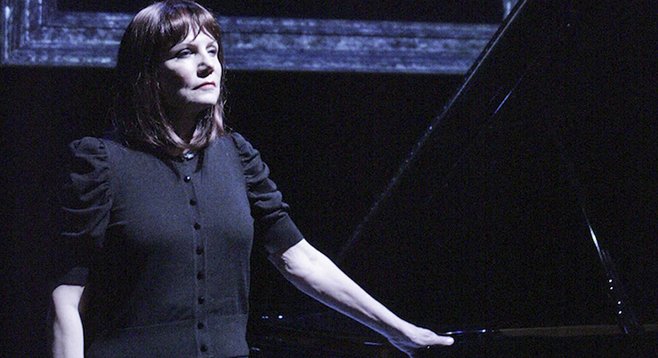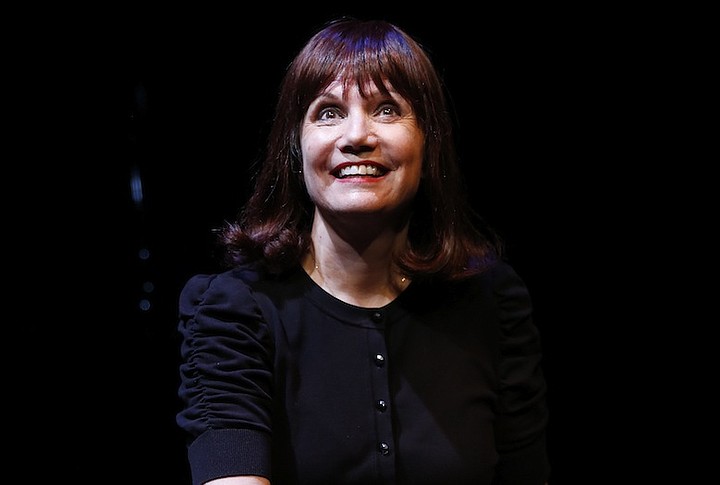 Facebook
Facebook
 X
X
 Instagram
Instagram
 TikTok
TikTok
 Youtube
Youtube

A Portrait of the Young Jewish Pianist in World War II. In the 1920s, Lisa Jura’s father was the best tailor in Vienna. But she dreamt of being a concert pianist. She’d debut playing Grieg’s “Piano Concerto in A Minor” at the hallowed Vienna Musikverein. The piece demands audacity, impeccable precision, and ornate flourishes like harp strings in high gear.
Jura’s mother Malka, also a gifted pianist, told her that “each piece of music tells a story.” And when Jura was the only one in her family to escape the Nazi hordes (“ugly men with armbands and rifles”), Malka said, “Never stop playing. I will be with you every step of the way.” Then Malka bravely let her daughter go, possibly forever.
The Pianist tells of the Holocaust, life in England during the London Blitz, and, of course, music. But deeper down it’s the story of three women with an unconditional bond: Malka, Lisa, and her daughter Mona Golabek — who performs their story at the Rep through September 28.

That sense of connection runs throughout the 90 minute “concert drama.”
When Golabek speaks in their voices you can almost see all three at once. And when she plays Grieg, Chopin, Rachmaninoff, and Scriabin on a shiny black Steinway, she does them more than proud. She’s a virtuoso.
In so many ways this is a solo effort no one else could, or should, do. Golabeck lived the story. She (and Lee Cohen) wrote about in The Children of Willesden Lane: Beyond the Kindertransport: A Memoir of Music, Love, and Survival. And even her playing has a felt sense of deep connections and channels that go beyond the performance.
The kicker, well one of them, comes when she plays Debussy’s almost achingly delicate “Clair de Lune” while buzz-bombs blitz London (the aural image recalls Kurt Vonnegut’s heartbreaking descriptions of the bombing of Dresden, and Dresden china, in Slaughterhouse Five).
Another kicker: Golabek is humble, gracious. She doesn’t strut or indulge in Comparative Suffering (Think you hurt? Wull pal, that ain’t nothin’). And she never tries for nuanced acting fillips or momentous instances. She speaks simply, in various voices, plays wonderfully, and never once gets in the way of the story.
The set looks like black velvet, from which hang large gilded picture frames of various shapes. Projections on them, which could have been lit brighter, illustrate specifics: storm troopers herding Jews; family portraits; the orphanage on Willesden Lane.
Hershey Felder adapated the piece. He also directed and created the accompanying soundtrack. Except for the early intrusion of an orchestra while Golabek was speaking, the track’s so carefully timed it begins several minutes before the show starts.
The taped introduction accounted for the only real drawback on opening night. Pianist opens the Rep’s new season. So, for the first time in its 39 years, Artistic Director Sam Woodhouse couldn’t do his annual welcoming speech, which has become as much a San Diego tradition as Over the Line or corruption in high public office.


A Portrait of the Young Jewish Pianist in World War II. In the 1920s, Lisa Jura’s father was the best tailor in Vienna. But she dreamt of being a concert pianist. She’d debut playing Grieg’s “Piano Concerto in A Minor” at the hallowed Vienna Musikverein. The piece demands audacity, impeccable precision, and ornate flourishes like harp strings in high gear.
Jura’s mother Malka, also a gifted pianist, told her that “each piece of music tells a story.” And when Jura was the only one in her family to escape the Nazi hordes (“ugly men with armbands and rifles”), Malka said, “Never stop playing. I will be with you every step of the way.” Then Malka bravely let her daughter go, possibly forever.
The Pianist tells of the Holocaust, life in England during the London Blitz, and, of course, music. But deeper down it’s the story of three women with an unconditional bond: Malka, Lisa, and her daughter Mona Golabek — who performs their story at the Rep through September 28.

That sense of connection runs throughout the 90 minute “concert drama.”
When Golabek speaks in their voices you can almost see all three at once. And when she plays Grieg, Chopin, Rachmaninoff, and Scriabin on a shiny black Steinway, she does them more than proud. She’s a virtuoso.
In so many ways this is a solo effort no one else could, or should, do. Golabeck lived the story. She (and Lee Cohen) wrote about in The Children of Willesden Lane: Beyond the Kindertransport: A Memoir of Music, Love, and Survival. And even her playing has a felt sense of deep connections and channels that go beyond the performance.
The kicker, well one of them, comes when she plays Debussy’s almost achingly delicate “Clair de Lune” while buzz-bombs blitz London (the aural image recalls Kurt Vonnegut’s heartbreaking descriptions of the bombing of Dresden, and Dresden china, in Slaughterhouse Five).
Another kicker: Golabek is humble, gracious. She doesn’t strut or indulge in Comparative Suffering (Think you hurt? Wull pal, that ain’t nothin’). And she never tries for nuanced acting fillips or momentous instances. She speaks simply, in various voices, plays wonderfully, and never once gets in the way of the story.
The set looks like black velvet, from which hang large gilded picture frames of various shapes. Projections on them, which could have been lit brighter, illustrate specifics: storm troopers herding Jews; family portraits; the orphanage on Willesden Lane.
Hershey Felder adapated the piece. He also directed and created the accompanying soundtrack. Except for the early intrusion of an orchestra while Golabek was speaking, the track’s so carefully timed it begins several minutes before the show starts.
The taped introduction accounted for the only real drawback on opening night. Pianist opens the Rep’s new season. So, for the first time in its 39 years, Artistic Director Sam Woodhouse couldn’t do his annual welcoming speech, which has become as much a San Diego tradition as Over the Line or corruption in high public office.
Comments